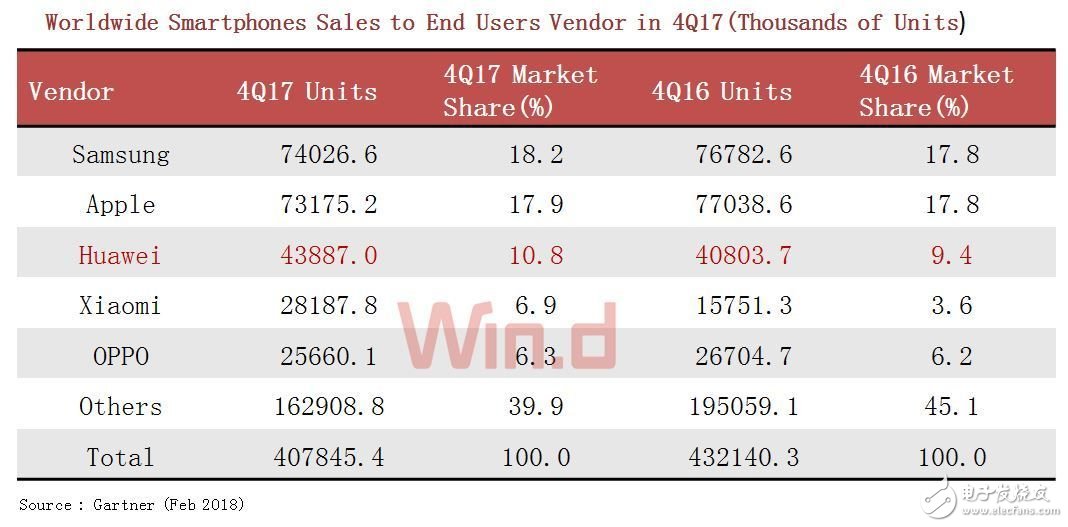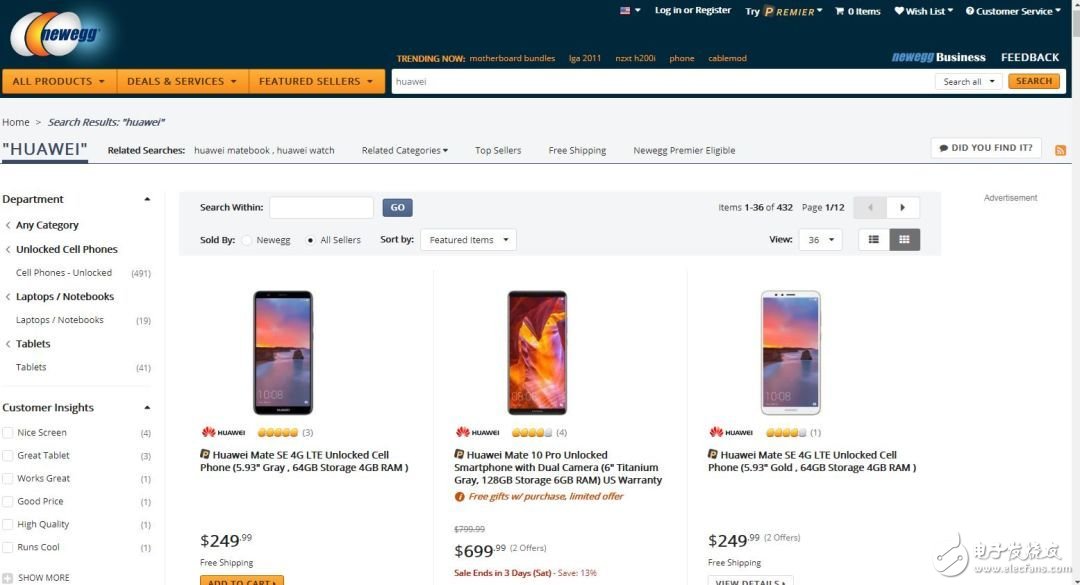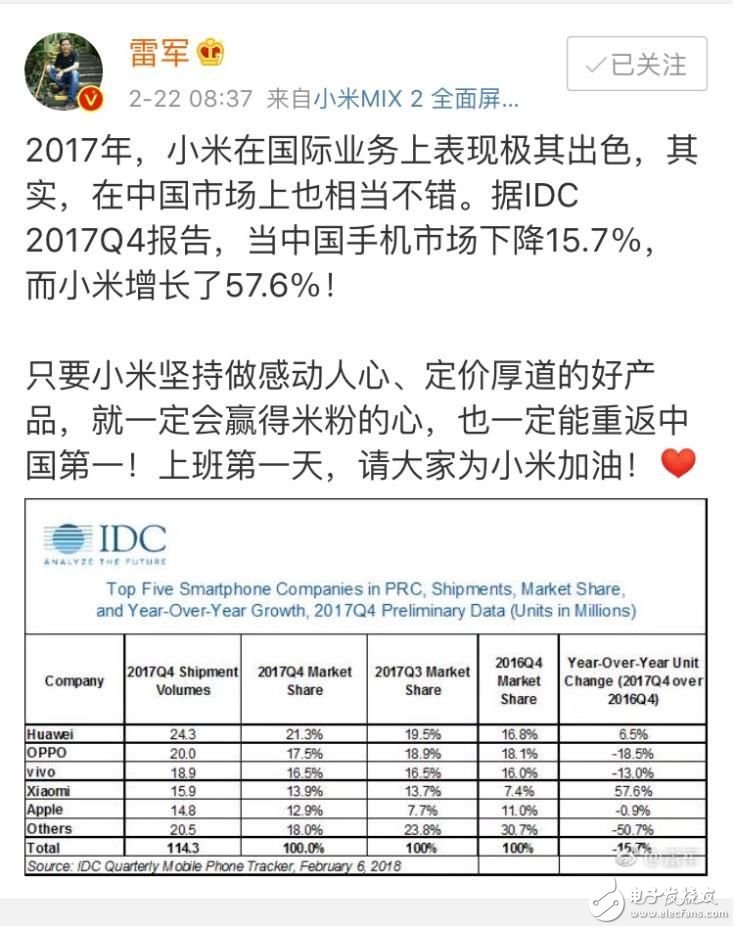Five points tell you that Chinese mobile phone manufacturers are not afraid of foreign refusal to sell, and exports are unstoppable.
Up to now, 46 of the world's top 50 operators are selling and using Huawei products, and corporate users and consumers in more than 170 countries around the world are also using Huawei products.
At the beginning of this year, Huawei decided to return to the US smartphone market, but this plan is still blocked. After AT&T, the second-largest mobile operator in the US, announced that it will stop working with Huawei, the latest news shows that Best Buy, the largest electronics retailer in the US, has stopped purchasing the latest mobile phones from Huawei and will stop selling Huawei products.
According to foreign media reports, Best Buy has stopped ordering Huawei's smartphones and is planning to stop selling Huawei products in the next few weeks. People familiar with the matter said that Best Buy had issued a voice of severance, but did not provide specific reasons, only that it would change the product supply strategy for "all kinds of reasons."

In response, Huawei officially responded that Huawei attaches great importance to the relationship with all partners and fully understands and respects its choices. “In view of the business confidentiality requirements, we do not disclose the specific details of the cooperation between the two parties.†In addition, Huawei also pointed out that up to now, 46 of the top TOP 50 operators in the world are selling and using Huawei products, and enterprise users in more than 170 countries around the world. And consumers are also using Huawei products.
Twists and turns, Huawei has returned to the US market with constant resistanceObviously, Huawei’s plan to return to the US mobile phone market was full of thorns. After the return plan was announced at the beginning of the year, Huawei and AT&T negotiated the sale of high-end mobile phones, but at the last minute, AT&T forced pressure to cancel the cooperation. . In addition, Verizon, another national telecommunications company in the United States, also announced the suspension of Huawei mobile phones.
Unlike the Chinese market, the United States is an operator-dominant mobile phone market. Operators dominate 90% of the smartphone market, and open retail channels account for only about 10%. In the past few years, Huawei has gradually established a group of fans through the retailers Best Buy, Amazon, and Newegg. Currently, Amazon and New Egg are still selling Huawei products. Whether Best Buy’s ban on Huawei has been under pressure from US politicians is not known. But in the United States, security issues have always plagued Huawei.
In February of this year, the heads of intelligence departments of the US FBI, CIA and NSA voiced to the US Senate Intelligence Committee, indicating that they would not recommend Huawei and ZTE mobile phones to ordinary American citizens. In addition, Michael Conaway, a Republican member of the US House of Representatives responsible for the intelligence committee, even said, "Because of the high-level intelligence sharing between the 'five-eye alliance' countries, I am worried about the emergence of Huawei or ZTE in any member state, It will pose a serious risk to our coordination and cooperation, as well as US national security."
The “Five-Eyes Alliance†is a core intelligence sharing and monitoring alliance in the United Kingdom, including the United States, the United Kingdom, Canada, Australia and New Zealand. However, at present, telecom operators in the United Kingdom, Canada and other countries have used Huawei equipment to build a communication network.
In addition, just this Friday (March 23), the US government announced the imposition of tariffs on Chinese imports worth US$60 billion and took measures to limit Chinese investment. The United States imposes tariffs on China, including high-performance medical devices, biomedicine, new materials, agricultural machinery, industrial robots, next-generation information technology, new energy vehicles, aerospace products, and high-speed rail equipment. The Sino-US trade issue is on the verge of exploding, which is undoubtedly worse for Huawei.
More and more brave, Brazil, India and many markets help Huawei internationalizationAccording to data released by market research firm Gartner, global smartphone sales in the fourth quarter of 2017 were 408 million units; Huawei sales ranked third in the world, and its smartphone sales in the fourth quarter were 43.887 million units, with a market share of 10.8. %.

Although Huawei has lost in the US market, it can be seen from the attitude of Huawei's top management that Huawei mobile phones are not planning to give up the US market. Xu Qinsong, vice president of Huawei's consumer business, said that despite recent setbacks in the US market, Huawei will continue to invest in the US market and expects Huawei's mobile phone sales in the US to double this year.
According to the latest news from foreign media, Huawei is still working hard to open up the dilemma of the US market. One means is to cut prices. According to foreign technology media reports, the official retail price of Mate 10 Pro in the United States is 800 US dollars, and the package was provided at the time of initial listing. This week, Huawei announced that the Mate 10 Pro phone will be reduced by $100 in the US, and consumers can start with only $700. Foreign media pointed out that after the price cut of 100 US dollars, Huawei's high-end mobile phone is more competitive with Samsung Electronics and Apple's competitive products.

In addition, Huawei also began selling a low-cost mobile phone Mate SE near the US$200 in the United States, which is cost-effective, uses a 5.93-inch screen, and is equipped with an Android system with good endurance. After the failure of selling high-end mobile phones through telecom giants, Huawei has begun to adopt other ideas.
Xu Qinsong also said that Huawei's mobile phone market share in some big countries is very low, but it also means that the global market share has a lot of room for improvement. Judging from the recent actions of Huawei in markets such as Brazil and India, Huawei has not slackened its share of the international market.
According to foreign media earlier this week, after retreating from the Brazilian market three years ago, Huawei plans to return to the Brazilian market to manufacture and sell smartphones. Liu Wei, vice president of Huawei, said that Huawei is conducting a comprehensive assessment of the current status of the smartphone market. There is no specific statement on the date, but he said that Huawei plans to return to the consumer industry in the next few months.
It is unclear what kind of mobile phone Huawei will sell in Brazil, but Liu Wei revealed that it will include entry-level mobile phones and high-end mobile phones. Some phones will be imported, but most may be assembled locally in Brazil.
In addition, according to reports from Indian media in mid-March, Huawei will significantly increase its mobile phone production capacity at its Chennai plant in India, while increasing its original equipment manufacturer (OEM) partners to promote local handset manufacturing and market share of Huawei in India. From the current 2% to more than 10%.
Peter Zhai, President of Huawei India Consumer Business Group, said, "We have promised to Indian Telecom Minister Manoj Sinha to deepen 'Made in India' and build local production capacity in India. India will also help us become the world's third largest smartphone brand in the next five years. ."
Opening up the territory, Chinese mobile phone manufacturers accelerate the pace of overseas market expansionIt is worth noting that despite the disruption of Huawei's sales in the US mobile phone market, Chinese mobile phone manufacturers still perform well in the international market, including the US market. At present, China's ZTE, TCL, and Motorola Group, a subsidiary of Lenovo Group, have gained a place in the United States. According to data from market research firm Counterpoint Research, ZTE’s market share in the United States has reached 11%, making it the fourth-largest mobile phone manufacturer in the US market.
At the same time, as a mainstream mobile phone manufacturer in China, Xiaomi has achieved great success in emerging markets such as Southeast Asia in recent years. In this context, Xiaomi officially announced at the beginning of this month that Xiaomi will enter the US market as soon as the end of this year. Chairman Xiaomi said, "We have been considering entering the US and plan to enter this market by the end of 2018 or early 2019."

Among the Chinese mobile phone manufacturers, the first group led by Huawei, Xiaomi, OPPO and vivo is accelerating the pace of overseas expansion. The data shows that in 2017, Huawei’s overseas sales accounted for about 33%, and Xiaomi’s overseas sales accounted for 43.4%. OPPO comes from Overseas sales accounted for 35.4%, and vivo also had 26.3%. At present, Xiaomi's internationalization business is progressing very rapidly. Now it has entered 73 countries and regions around the world, and ranks in the top three in 9 countries. In the Indian market, Xiaomi India grew by about 300% compared with the same period last year, defeating Samsung, ranking first. Lei Jun also set up a strong man at the annual meeting of Xiaomi: the global market, opening up the territory!
Smoke Alarm,Smoke Detector,Smart Smoke Alarm,Wireless Smoke Alarms
ZHEJIANG QIANNA ELECTRIC CO.,LTD , https://www.traner-elec.com